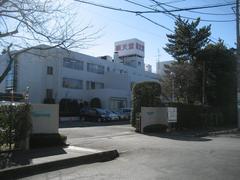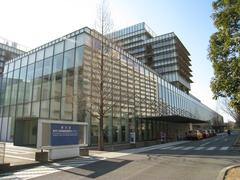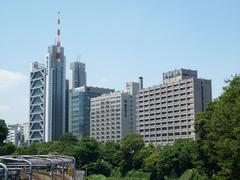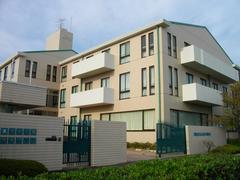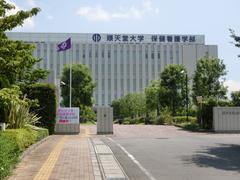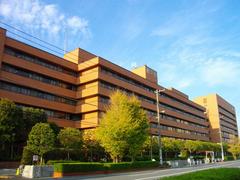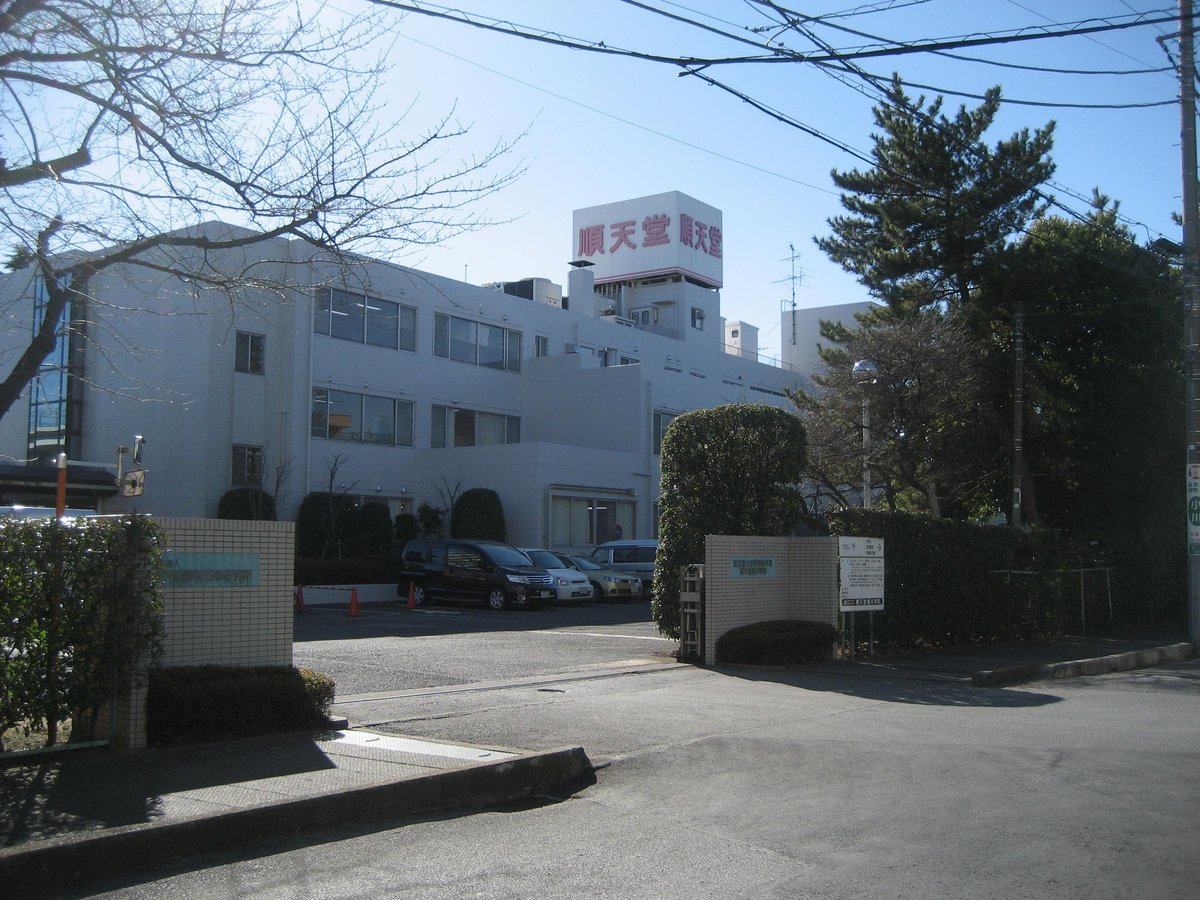
Juntendo University Visiting Hours, Tickets, and Tokyo Historical Sites Guide
Date: 14/06/2025
Introduction to Juntendo University and Its Significance
Juntendo University, located in Tokyo, Japan, is a premier institution that seamlessly blends historical significance with modern advancements in medical education and research. Established in 1838 during the late Edo period, it is Japan’s oldest institution for Western medical education. The university pioneered the adoption of Dutch medical knowledge when traditional Chinese medicine was still prevalent, marking a critical turning point in the evolution of Japanese healthcare.
This comprehensive guide offers visitors a detailed overview of Juntendo University’s history, practical information on visiting hours and accessibility, transportation options, and nearby cultural attractions. Whether you’re a history buff, student, medical professional, or tourist, Juntendo University provides a unique opportunity to experience Tokyo’s academic and medical heritage.
The university’s flagship hospital, located in the historic Hongo-Ochanomizu district, stands as a testament to the evolution of medical practice in Japan. Its serene campus environment combines traditional Japanese aesthetics with state-of-the-art facilities, including gardens, art installations, and annual cultural festivals.
By utilizing resources such as the Juntendo University official website, the Juntendo University Hospital visitor guide, and transit information from Tokyo Metro Ochanomizu Station, visitors can plan an informed and memorable visit. This guide also includes visitor tips, FAQs, and opportunities for guided tours, ensuring a comprehensive and enriching experience.
Table of Contents
- Introduction
- Visiting Hours and Tickets
- How to Get There
- Accessibility
- Nearby Attractions
- Historical Overview
- Contributions to Medicine and Education
- Pioneering Initiatives and Milestones
- Visitor Tips and Highlights
- Frequently Asked Questions (FAQ)
- Visual and Virtual Resources
- Conclusion and Call to Action
Visiting Hours and Tickets
The main campus in Bunkyo, Tokyo, generally welcomes visitors during standard university hours: Monday to Friday, 9:00 AM to 5:00 PM. Some areas, especially research centers and medical facilities, may have restricted access. Guided tours and special exhibits may require advance booking and, occasionally, tickets. For current details, check the official website.
How to Get There
Juntendo University’s Bunkyo campus is centrally located and easily accessible by public transportation:
- Subway: The closest stations are Korakuen Station and Myogadani Station, both within a 10-minute walk.
- JR Lines: The JR Yamanote Line provides seamless connections to these subway lines.
- Ochanomizu Station: For the hospital, use the Tokyo Metro Marunouchi Line and Chiyoda Line, or the JR Chuo-Sobu Line (Ochanomizu Station guide).
Accessibility
The university is committed to ensuring accessibility for all visitors. The main campus features wheelchair-accessible entrances, elevators, and accessible restrooms. For specific accommodation needs, contact visitor services in advance.
Nearby Attractions
The surrounding area boasts several notable sites:
- Koishikawa Korakuen Garden: A traditional Japanese landscape garden.
- Tokyo Dome City: An entertainment complex with shops, attractions, and dining.
- Kanda Shrine, Yushima Seido, and Tokyo National Museum: Easily accessible from the campus and hospital.
These destinations offer a blend of cultural, historical, and modern experiences, making a visit especially rewarding.
Historical Overview
Origins in the Edo Period (1838–1868)
Founded by Dr. Taizen Sato, Juntendo University introduced Western medical education to Japan by utilizing Dutch medical texts during a period dominated by Chinese medicine. This foundational era set the stage for the modernization of Japanese surgery and medical practice.
Meiji Era Growth and Transition (1868–1912)
Under the leadership of Takanaka Sato during the Meiji Restoration, the university expanded its influence, integrating Western medical education into Japan’s national framework and broadening public access to modern healthcare.
Modern University Status
By the early 20th century, Juntendo evolved into a comprehensive private university, now offering a wide array of undergraduate and graduate programs in medicine, health sciences, and international liberal arts. Its campuses extend beyond Tokyo, including locations in Chiba and Shizuoka.
Contributions to Medicine and Education
Juntendo University has been instrumental in advancing Japan’s universal health coverage, medical research, and public health initiatives. Its alumni include distinguished researchers, athletes, and healthcare leaders. The faculty’s accolades include international honors such as the AAPM William D. Coolidge Award.
Pioneering Initiatives and Milestones
A notable initiative is the Japanese Center for Research on Women in Sport (JCRWS), established in 2014, which advances health and leadership opportunities for female athletes. Juntendo continues to lead in sports medicine, rehabilitation, and innovative research.
Visitor Tips and Highlights
- Best Time to Visit: Weekdays during academic hours for optimal access to exhibits and tours.
- Photography: Permitted in public areas; check for restrictions in hospitals or research zones.
- Guided Tours: Available by request; advance booking is recommended.
- Special Events: Look out for public lectures, exhibitions, and sports events.
Frequently Asked Questions (FAQ)
Q: Are there entrance fees or tickets required?
A: General access is free, but some exhibitions or tours may require tickets. Check the official website for details.
Q: What are the university’s visiting hours?
A: Monday to Friday, 9:00 AM to 5:00 PM; some facilities may differ.
Q: Is Juntendo University accessible by public transport?
A: Yes, Korakuen and Myogadani stations are nearby.
Q: Are facilities accessible for visitors with disabilities?
A: Yes, with elevators and accessible restrooms available throughout the campus.
Q: Can I join a guided tour?
A: Yes, by appointment; contact visitor services in advance.
Visual and Virtual Resources
Explore virtual tours and image galleries on the official university website, featuring campus highlights, historical artifacts, and research initiatives. Maps with recommended photo spots are also provided.
Conclusion and Call to Action
Juntendo University offers an exceptional blend of history, innovation, and culture, making it a must-visit in Tokyo for those interested in medical history, academia, or Japanese culture. For up-to-date visiting hours and event information, consult the official website. Enhance your visit by exploring virtual resources and nearby attractions, and consider downloading the Audiala app for real-time tips and travel updates.
Juntendo University Hospital: A Historic Medical Landmark in Tokyo
Introduction
Located in Tokyo’s historic Hongo-Ochanomizu district, Juntendo University Hospital stands as one of Japan’s oldest and most prestigious centers for Western medicine. Founded in 1838, its public areas and museum sections offer visitors a window into the nation’s medical heritage and architectural evolution.
History and Cultural Significance
Juntendo University Hospital was pivotal in introducing and institutionalizing Western medical practices in Japan. Its blend of traditional and modern architecture mirrors its nearly two centuries of continuous development.
Visiting Hours and Admission
- Public Areas and Museum: Open Monday to Friday, 9:00 AM to 5:00 PM (closed on weekends and national holidays).
- Admission: Free for the lobby and museum areas; guided tours available by appointment for groups (hospital visitor guide).
Accessibility
Accessible via Tokyo Metro Marunouchi and Chiyoda Lines, with Ochanomizu Station nearby. The facility is wheelchair-friendly, with ramps and elevators. Parking is limited; use public transportation when possible.
Events and Nearby Attractions
- Special Events: Occasional public lectures, exhibitions, and cultural events are held—check the hospital website for schedules.
- Nearby Sites: Kanda Shrine, Yushima Seido, and the Tokyo National Museum are easily accessible for a combined day of historical exploration.
Travel Tips
- Visit on weekdays for tours.
- Wear comfortable shoes for walking.
- Bring a camera (photography allowed in public areas only).
FAQ
Q: Can casual visitors enter the hospital?
A: Yes, public areas and the museum are open during visiting hours.
Q: Are guided tours available?
A: Yes, by advance reservation.
Q: Is there an entry fee?
A: No, admission is free for public areas.
Q: Is the hospital open on weekends?
A: Public areas are closed on weekends and national holidays.
Q: Is the hospital accessible for people with disabilities?
A: Yes, it is fully accessible.
Visuals
Virtual tours and images of the hospital’s historic and modern facilities are available online (hospital website).
Useful Links
- Juntendo University Hospital Official Website
- Tokyo Metro - Ochanomizu Station
- Visit Tokyo - Hongo Area Guide
Juntendo University Campus Overview
Location and Access
The Hongo-Ochanomizu Campus is centrally located in Tokyo’s Bunkyo Ward. It is accessible by Tokyo Metro Marunouchi Line (Ochanomizu Station), JR Chuo-Sobu Line, and several bus routes (campus access guide).
Visiting Hours and Admission
- Hours: 8:00 AM to 6:00 PM daily.
- Admission: Free.
- Tours: Primarily for prospective students and organized groups, but self-guided visits are welcome, especially during Open Campus Days.
- Reservations: Not required for general visits; check for event-specific details.
Campus Features
Architecture and Nature
The campus integrates historic and contemporary architecture, with tree-lined walkways, landscaped gardens, and peaceful courtyards.
Key Buildings
- Juntendo University Hospital: Renowned for advanced research and patient care (hospital access).
- Medical Research Center: Equipped with state-of-the-art labs.
- Library: Extensive medical literature and study areas.
Amenities
- Dining: Cafeterias serve Japanese and international cuisine.
- Sports Facilities: Gymnasium and sports fields, sometimes open during public events.
- Shops: Bookstores and convenience stores on-site.
Cultural Events and Art
The university hosts Open Campus Days, health fairs, lectures, and cultural festivals throughout the year. Art installations and statues commemorate its history, offering great photo opportunities.
Visitor Etiquette
- Navigation: Bilingual campus maps are available.
- Accessibility: Fully equipped for wheelchair access.
- Photography: Allowed in outdoor areas; respect privacy near hospitals and labs.
- Conduct: Maintain low noise, dispose of trash properly, and follow posted guidelines.
Nearby Attractions
- Ueno Park: Museums, zoo, and cherry blossoms (Ueno guide).
- Akihabara: Electronics and anime hub.
- Kanda Shrine: A historic Shinto shrine.
Best Times to Visit
- Spring: Late March–April (cherry blossoms)
- Autumn: Late October–November (colorful foliage) (Tokyo seasonal highlights)
Practical Information
- Transit: Use IC cards like Suica or Pasmo (Tokyo transportation guide).
- Payments: Cash is common; some places accept credit cards (Tokyo cash tips).
- Language: English support available; translation apps helpful.
- Rush Hours: Avoid 7–9 AM and 5–7 PM (Tokyo rush hour advice).
FAQ
Q: What are the campus visiting hours?
A: 8:00 AM to 6:00 PM daily.
Q: Is there an admission fee?
A: No, campus visits are free.
Q: Are guided tours available?
A: Mainly for prospective students; self-guided visits are welcome.
Q: Is the campus wheelchair accessible?
A: Yes.
Q: Can I take photos?
A: Yes, in outdoor public areas.
Visuals and Media
Virtual tours and image galleries are available on the official website.
Practical Visitor Information: Complete Guide to Juntendo University Campuses
Campus Locations and Access
Juntendo University operates several campuses, including the main Tokyo headquarters and additional sites in Inzai (Chiba), Mishima, and Sakura (Sakura Campus guide).
- Tokyo Campus: 3-1-3 Hongo, Bunkyo-ku, Tokyo 113-8431 (hospital website)
Getting There
- Train:
- Tokyo Campus: Tokyo Metro Marunouchi Line (Hongo-sanchome), Toei Oedo Line
- Sakura Campus: JR Sobu Line to Sakura Station, then bus or taxi
- Airport:
- Narita: 60–90 minutes to Sakura
- Haneda: Direct trains/buses to Tokyo Campus
Visiting Hours and Access
- Business Hours: 9:00 AM–5:00 PM, Monday–Friday (check specific campus pages)
- Admission: Free; certain areas require prior permission.
- Restrictions: Research and hospital areas are restricted.
Facilities and Amenities
- Navigation: English signage and maps (English Portal)
- Libraries: Sakura Library features traditional design; access may require arrangement.
- Dining: Cafeterias with various dietary options.
- Wi-Fi: Available for students and registered visitors.
Events and Cultural Experiences
- Festivals and Fairs: Seasonal events and student activities.
- Guided Tours: Available for prospective students/academics by arrangement.
- International Exchange Center: Supports international guests with language and cultural programs.
Academic and Research Visits
- Short-Term Programs: Offered in medical and liberal arts faculties.
- Research Facilities: Access by approval.
- Language Support: Japanese courses and support services available.
Health and Safety
- Medical Facilities: Six affiliated hospitals; international services via the International Healthcare Department.
- Emergency Procedures: Clearly posted.
Accessibility
All campuses are equipped with ramps, elevators, and accessible restrooms. Contact the International Office for specific needs.
Visitor Tips
- Arrange in Advance: For special access or tours.
- Bring ID: Especially for research facilities.
- Dress Appropriately: Smart-casual preferred.
- Language: English widely used; some Japanese helpful.
- Photography: Restrictions apply in hospitals and labs.
- Payments: Credit cards and IC cards accepted; cash still useful.
Accommodation and Area Attractions
- On-campus Housing: Limited; advance booking necessary.
- Hotels: Options near each campus; book early in peak seasons.
- Nearby: Ueno Park, Tokyo Dome, Yanaka, Sakura Castle Park, National Museum of Japanese History.
FAQ
Q: Are there entrance fees?
A: No, general access is free.
Q: Can tourists join guided tours?
A: Limited; mainly for students and academics.
Q: What are the visiting hours?
A: Generally 9:00 AM–5:00 PM weekdays; check campus-specific hours.
Q: Is the campus wheelchair accessible?
A: Yes.
Q: Is photography allowed?
A: In general areas only; not in hospitals or labs.
Sustainability and Future Developments
The university is advancing sustainability through eco-friendly initiatives and ongoing upgrades to facilities and digital infrastructure.
Contact Information
- Tokyo Campus: 3-1-3 Hongo, Bunkyo-ku, Tokyo 113-8431. Tel: 03-3813-3111 (hospital site)
- Sakura Campus: Official website
- International Office: International Exchange Center
Summary
Juntendo University stands as a unique convergence of historical legacy, medical advancement, and cultural vitality in Tokyo. From its origins as Japan’s pioneering Western medical school to its present role as a multifaceted university, Juntendo has shaped medical education and research for generations. With accessible campuses, visitor-friendly amenities, and proximity to key Tokyo attractions, it is a rewarding destination for all who wish to experience Japan’s academic and medical heritage.
For the latest information, visit the official university website, the Juntendo University Hospital visitor guide, and Tokyo Metro.
References and Further Reading
- Juntendo University: Visiting Guide and Historical Insights into a Tokyo Medical Landmark, 2025
- Visiting Juntendo University Hospital: A Historic Medical Landmark in Tokyo, 2025
- Juntendo University Campus Visit: A Guide to Exploring Tokyo’s Historic Academic Landmark, 2025
- Practical Visitor Information: Your Complete Guide to Visiting Juntendo University Campuses, 2025
